Abstract
Intraluminal fat inhibits gastric secretion through as yet undetermined mechanisms which involve release of one or more hormonal enterogastrones. As intraluminal fat releases Peptide YY (PYY) in amounts sufficient to inhibit meal-stimulated acid secretion, this ileo-colonic peptide exhibits the characteristics required of an enterogastrone. The present study seeks to determine the mechanism by which PYY inhibits acid secretion by examining the effects of PYY on gastric acid stimulated by pentagastrin, histamine, and bethanechol. In addition, effects of PYY on the acid response to sham feeding and distention of a denervated gastric pouch were examined. A dose of PYY (400 pmol X kg-1 X h-1) was employed that reproduced blood levels observed after intestinal perfusion with oleic acid and inhibited the acid secretory response to an intragastric meal by 35 +/- 6%. This same dose of PYY maximally inhibited histamine- and pentagastrin-stimulated acid secretion by 28 +/- 7% (P less than 0.05), and 17 +/- 4% (P less than 0.05), respectively. Although PYY had no effect on bethanechol-stimulated secretion it markedly inhibited the secretory response to sham feeding, maximally reducing secretion by 90 +/- 4% (P less than 0.01). We speculate that PYY acts by inhibiting acetylcholine release from vagal nerve fibers rather than by inhibiting acetylcholine's action on the parietal cell. The demonstration that PYY virtually abolishes cephalic phase acid secretion while having little if any effect on the response to exogenous secretogogues gives PYY unique characteristics among the known hormonal inhibitors of gastric secretion.
Full text
PDF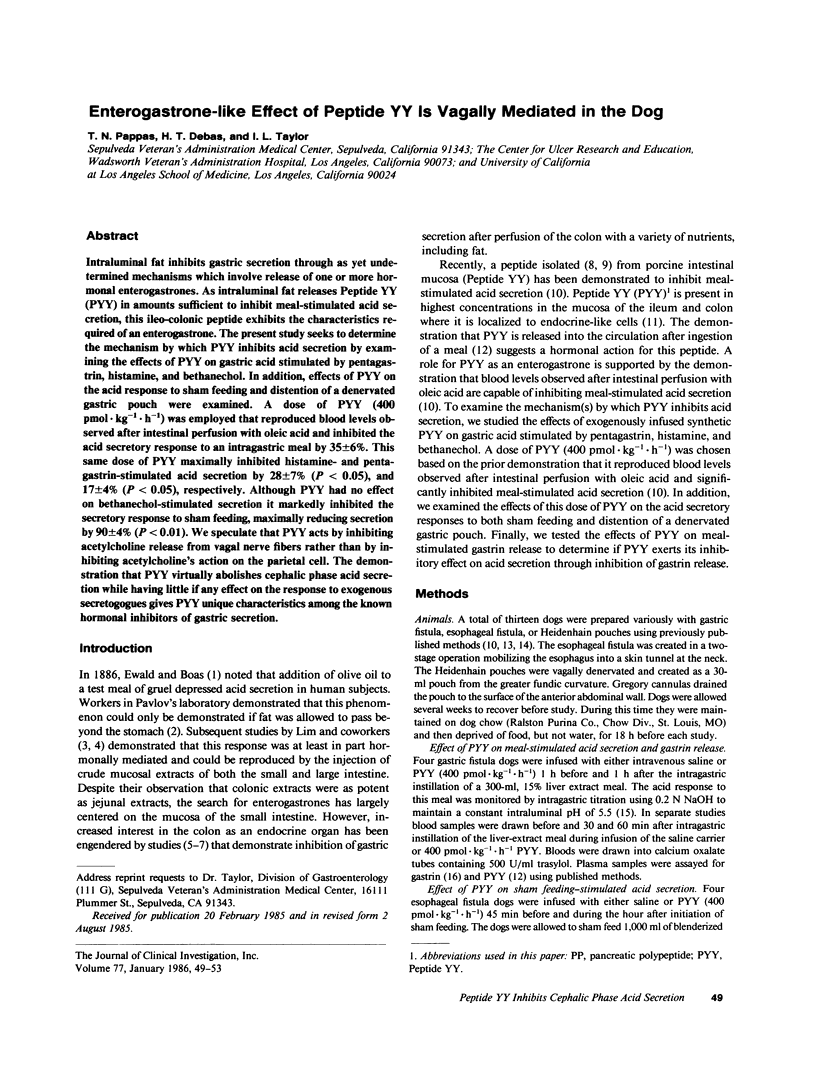
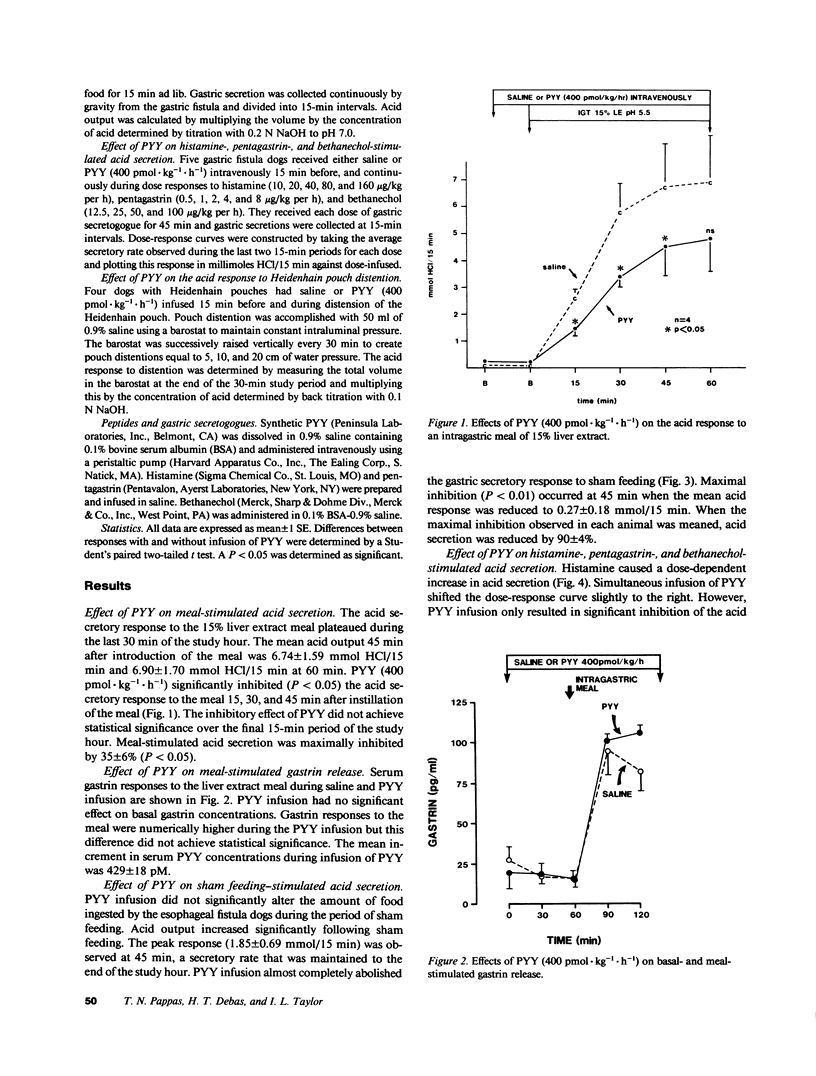
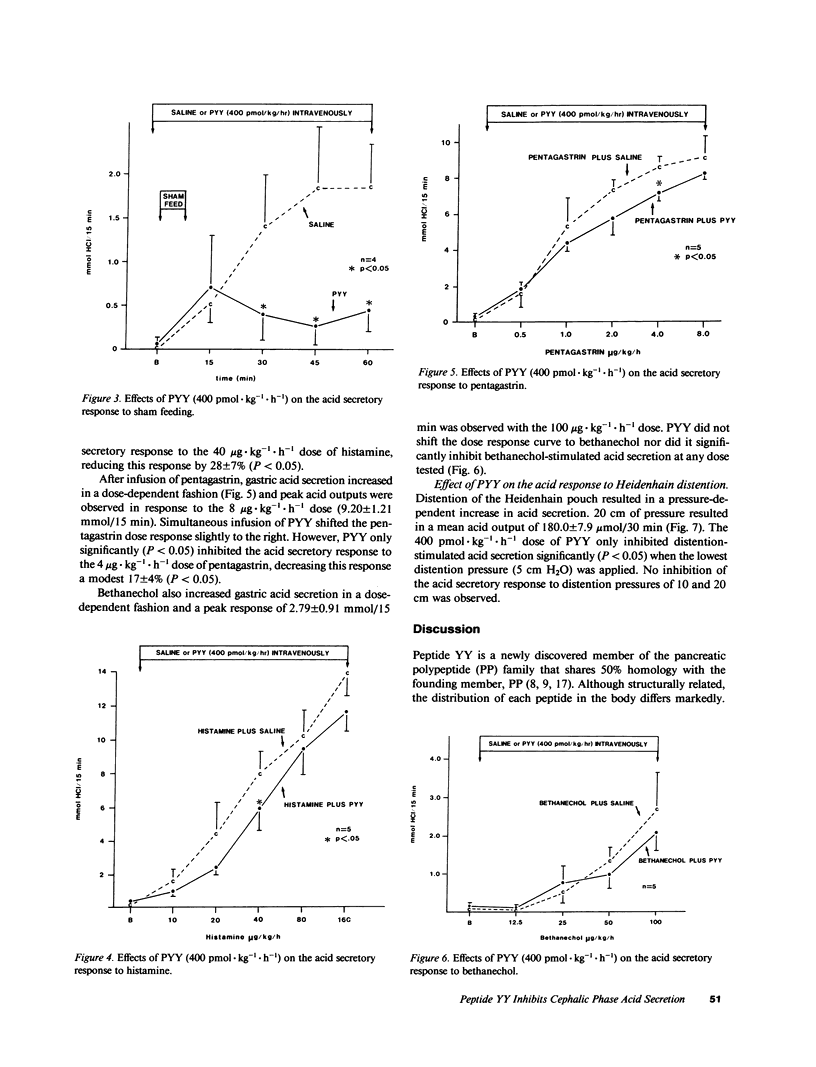
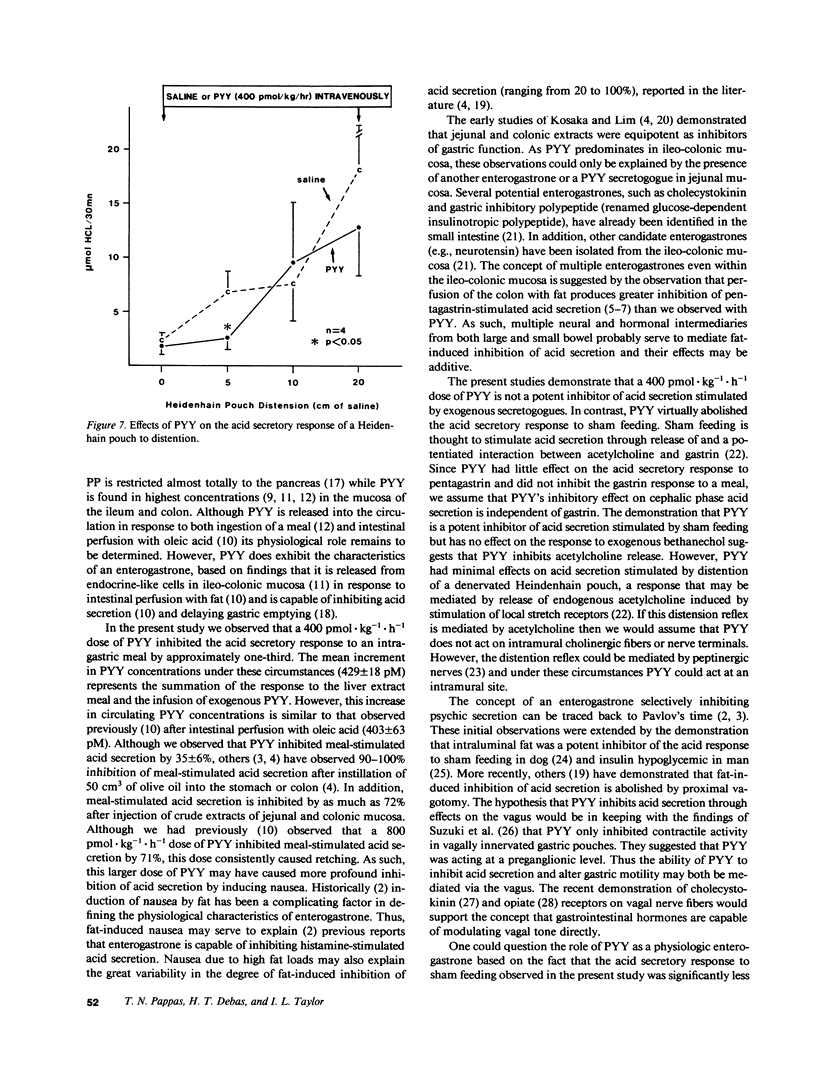
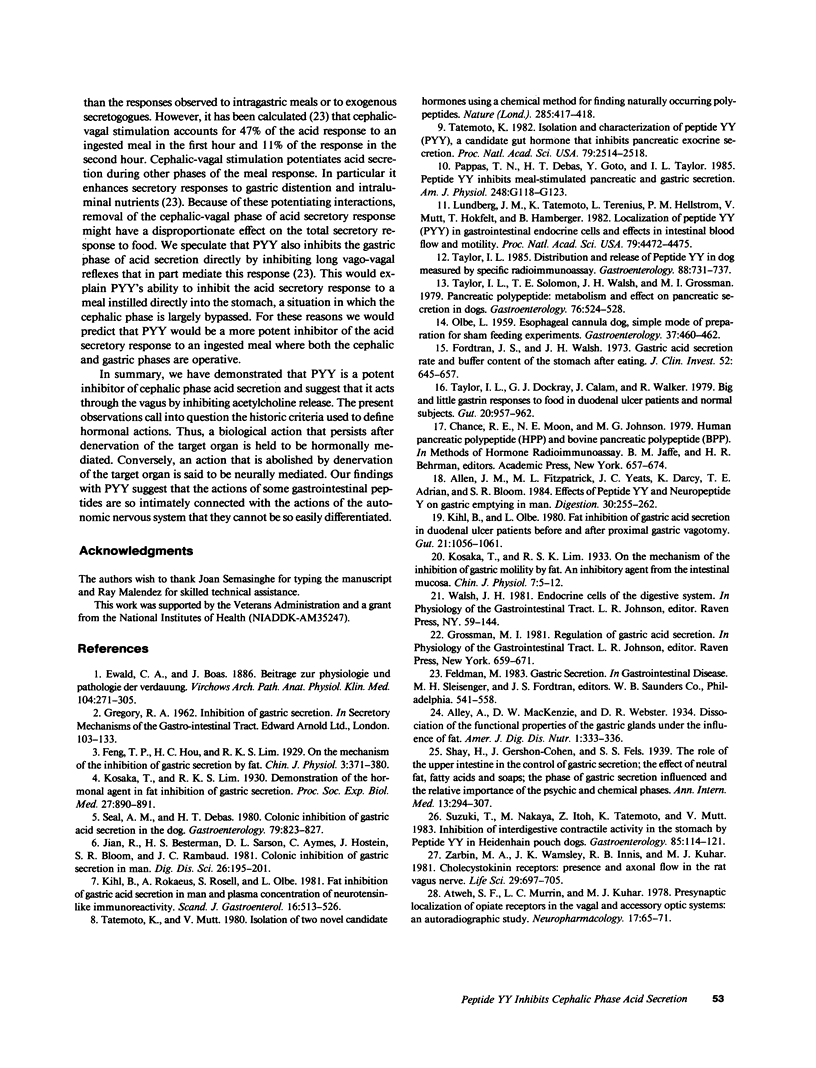
Selected References
These references are in PubMed. This may not be the complete list of references from this article.
- Allen J. M., Fitzpatrick M. L., Yeats J. C., Darcy K., Adrian T. E., Bloom S. R. Effects of peptide YY and neuropeptide Y on gastric emptying in man. Digestion. 1984;30(4):255–262. doi: 10.1159/000199117. [DOI] [PubMed] [Google Scholar]
- Atweh S. F., Murrin L. C., Kuhar M. J. Presynaptic localization of opiate receptors in the vagal and accessory optic systems: an autoradiographic study. Neuropharmacology. 1978 Jan;17(1):65–71. doi: 10.1016/0028-3908(78)90175-2. [DOI] [PubMed] [Google Scholar]
- Fordtran J. S., Walsh J. H. Gastric acid secretion rate and buffer content of the stomach after eating. Results in normal subjects and in patients with duodenal ulcer. J Clin Invest. 1973 Mar;52(3):645–657. doi: 10.1172/JCI107226. [DOI] [PMC free article] [PubMed] [Google Scholar]
- Jian R., Besterman H. S., Sarson D. L., Aymes C., Hostein J., Bloom S. R., Rambaud J. C. Colonic inhibition of gastric secretion in man. Dig Dis Sci. 1981 Mar;26(3):195–201. doi: 10.1007/BF01391629. [DOI] [PubMed] [Google Scholar]
- Kihl B., Olbe L. Fat inhibition of gastric acid secretion in duodenal ulcer patients before and after proximal gastric vagotomy. Gut. 1980 Dec;21(12):1056–1061. doi: 10.1136/gut.21.12.1056. [DOI] [PMC free article] [PubMed] [Google Scholar]
- Kihl B., Rökaeus A., Rosell S., Olbe L. Fat inhibition of gastric acid secretion in man and plasma concentrations of neurotensin-like immunoreactivity. Scand J Gastroenterol. 1981;16(4):513–526. doi: 10.3109/00365528109182006. [DOI] [PubMed] [Google Scholar]
- Lundberg J. M., Tatemoto K., Terenius L., Hellström P. M., Mutt V., Hökfelt T., Hamberger B. Localization of peptide YY (PYY) in gastrointestinal endocrine cells and effects on intestinal blood flow and motility. Proc Natl Acad Sci U S A. 1982 Jul;79(14):4471–4475. doi: 10.1073/pnas.79.14.4471. [DOI] [PMC free article] [PubMed] [Google Scholar]
- OLBE L. Esophageal cannula dog, a simple mode of preparation for sham feeding experiments. Gastroenterology. 1959 Oct;37:460–462. [PubMed] [Google Scholar]
- Seal A. M., Debas H. T. Colonic inhibition of gastric acid secretion in the dog. Gastroenterology. 1980 Nov;79(5 Pt 1):823–826. [PubMed] [Google Scholar]
- Suzuki T., Nakaya M., Itoh Z., Tatemoto K., Mutt V. Inhibition of interdigestive contractile activity in the stomach by peptide YY in Heidenhain pouch dogs. Gastroenterology. 1983 Jul;85(1):114–121. [PubMed] [Google Scholar]
- Tatemoto K. Isolation and characterization of peptide YY (PYY), a candidate gut hormone that inhibits pancreatic exocrine secretion. Proc Natl Acad Sci U S A. 1982 Apr;79(8):2514–2518. doi: 10.1073/pnas.79.8.2514. [DOI] [PMC free article] [PubMed] [Google Scholar]
- Tatemoto K., Mutt V. Isolation of two novel candidate hormones using a chemical method for finding naturally occurring polypeptides. Nature. 1980 Jun 5;285(5764):417–418. doi: 10.1038/285417a0. [DOI] [PubMed] [Google Scholar]
- Taylor I. L. Distribution and release of peptide YY in dog measured by specific radioimmunoassay. Gastroenterology. 1985 Mar;88(3):731–737. doi: 10.1016/0016-5085(85)90144-1. [DOI] [PubMed] [Google Scholar]
- Taylor I. L., Dockray G. J., Calam J., Walker R. J. Big and little gastrin responses to food in normal and ulcer subjects. Gut. 1979 Nov;20(11):957–962. doi: 10.1136/gut.20.11.957. [DOI] [PMC free article] [PubMed] [Google Scholar]
- Taylor I. L., Solomon T. E., Walsh J. H., Grossman M. I. Pancreatic polypeptide. Metabolism and effect on pancreatic secretion in dogs. Gastroenterology. 1979 Mar;76(3):524–528. [PubMed] [Google Scholar]
- Zarbin M. A., Wamsley J. K., Innis R. B., Kuhar M. J. Cholecystokinin receptors: presence and axonal flow in the rat vagus nerve. Life Sci. 1981 Aug 17;29(7):697–705. doi: 10.1016/0024-3205(81)90022-9. [DOI] [PubMed] [Google Scholar]


